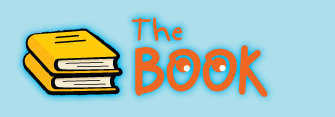 |
|||||

Description
Little Johnny has a problem. He cannot see clearly. In “Johnny Can See”, readers are taken on an experiential adventure as this young boy visits the eye doctor for the first time. Written in a poem format using 4-line stanzas, “Johnny Can See” exposes young readers to the importance of visiting the eye doctor regularly in order to maintain optimum eye-health. It also shows them how much fun it can be if you simply use your imagination! "Johnny’s story draws attention to the struggle many children face. His experience provides an encouraging introduction for young children to understand this common condition and explains the procedures an eye doctor takes to find a successful solution. A great opportunity to read with your child!"
- Julia Gabriel M.Ed, Hon.G.S.M, L.G.S.M, L.L.C.M (TD) Founder and Director of Julia Gabriel Centre for Learning, Chiltern House Child Care Centres and Julia Gabriel School of Education, Singapore. "Too many children who are experiencing learning difficulty at school – or simply not doing as well as they could – have undetected visual difficulties. This book highlights the importance of early diagnosis of visual difficulties and will help children understand what happens in an eye doctor’s clinic by illustrating the procedures they will encounter at an eye check up." - Robin Moseley Chief Executive Officer Dyslexia Association of Singapore Learn more about eye conditions
“Johnny Can See” is not only an excellent introductory book to the world of poetry, but it is also an invaluable teaching resource that explains eye conditions to children. In the glossary, Johnny provides information on eye conditions, eye testing equipment and invaluable eye care tips. Here’s a sample of what you can expect. Common Eye problems
Eye testing equipment
| |||||
Copyright © 2013 Benita Fong. All Rights Reserved.